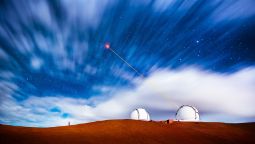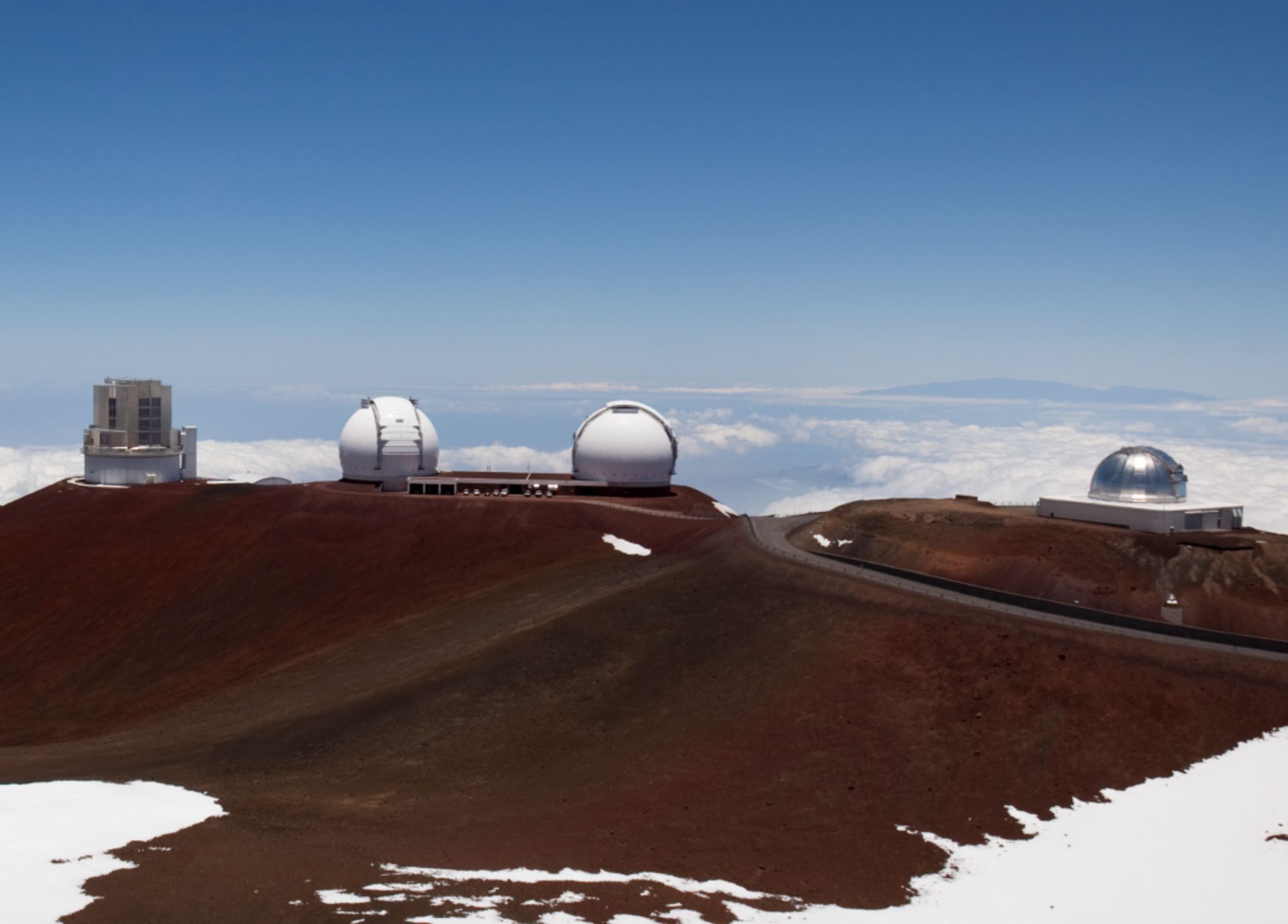
Our partnership
In a landmark development in July 2023, Swinburne became a scientific partner of the W. M. Keck Observatory – joining NASA, the University of California, Caltech and the University of Hawaii. Since the construction of Keck Observatory was completed around 30 years ago, Swinburne is the only new partner invited to join. Swinburne is also the only Australian university with guaranteed access to this world-leading facility.
The telescopes
Keck Observatory hosts the twin Keck I and II telescopes at 4,200 metres above sea level on top of dormant volcano Mauna Kea on the Big Island of Hawaii. With a diameter of 10 metres each, they are the world's largest and most productive ground-based optical infrared telescopes.
Each telescopes features a mirror made from 36 hexagonal segments (1.8 metres in diameter each). The enormous structure weighs over 14,000 kilograms, but is extremely well balanced to be pointed towards objects in the night sky with incredible precision.

The W. M. Keck Observatory on top of Mauna Kea in Hawaii.

Keck Observatory instruments
- Deep Extragalactic Imaging Multi-Object Spectrograph (DEIMOS)
- Echellette Spectrograph and Imager (ESI)
- High Resolution Echelle Spectrometer (HIRES)
- Keck Cosmic Web Imager (KCWI)
- Keck Planet Finder (KPF)
- Low Resolution Imaging Spectrograph (LRIS)
- Multi-Object Spectrograph for Infra-Red Exploration (MOSFIRE)
- Near Infrared Camera – Second Generation (NIRC2)
- Near Infrared Echellette Spectrometer (NIRES)
- Near Infrared Spectrometer (NIRSPEC)
- OH-Suppressing Infra-Red Imaging Spectrograph (OSIRIS)
The Swinburne Time Assignment Committee for Keck (STACK) grants access to the Keck telescopes. Following a call for proposals, Swinburne astronomers can apply to use the telescopes to complete their astronomy research program. The STACK reviews the applications and grants access to successful applicants.
-
“Our access to the Keck Observatory has allowed the Centre for Astrophysics and Supercomputing to attract top astronomers, postdoctoral researchers and students from all over the world.
Using the Keck Telescopes, we push the boundaries of the observable universe – discovering the first galaxies to have formed and determining how they evolved into what we see today.”
Professor Glenn Kacprzak
Study astronomy at Swinburne
-

Astronomy
Swinburne postgraduate Astronomy courses include Master, Diploma and Certificate level qualifications. Access the Centre for Astrophysics and Supercomputing. -

Centre for Astrophysics and Supercomputing
The Centre for Astrophysics and Supercomputing is dedicated to inspiring a fascination in the universe through research and education.
-

Swinburne Astronomy Online
Unlock the universe with Swinburne Astronomy Online (SAO) – a dynamic, globally recognised postgraduate program designed for anyone passionate about astronomy.
Contact the research team
Whether you’re a PhD student, media, or an organisation looking to collaborate, partner or access our facilities, please email the team via research@swinburne.edu.au or call +61 3 9214 4859.

